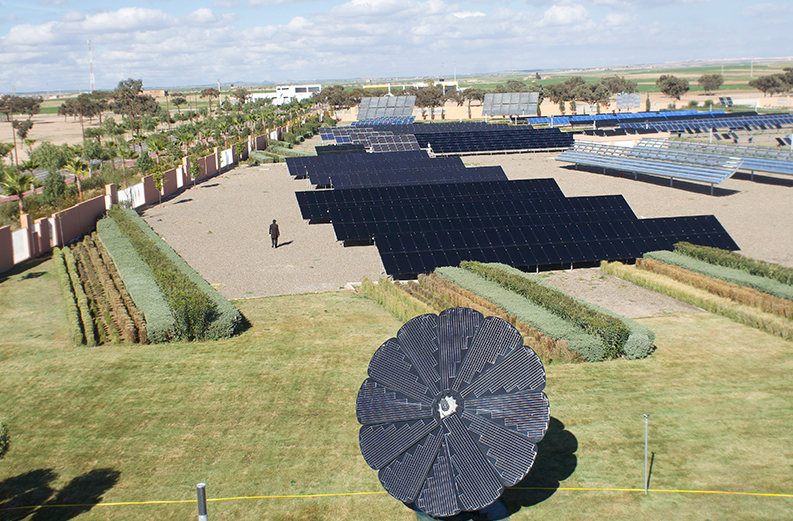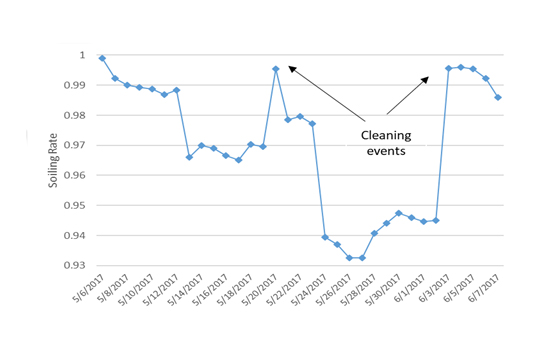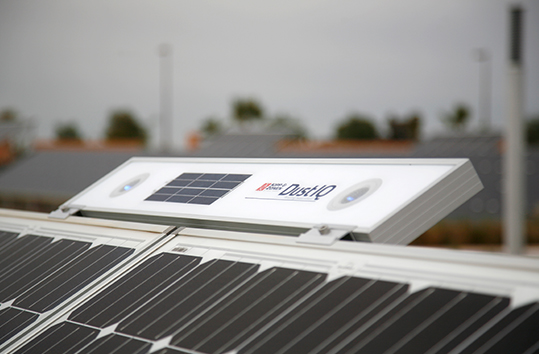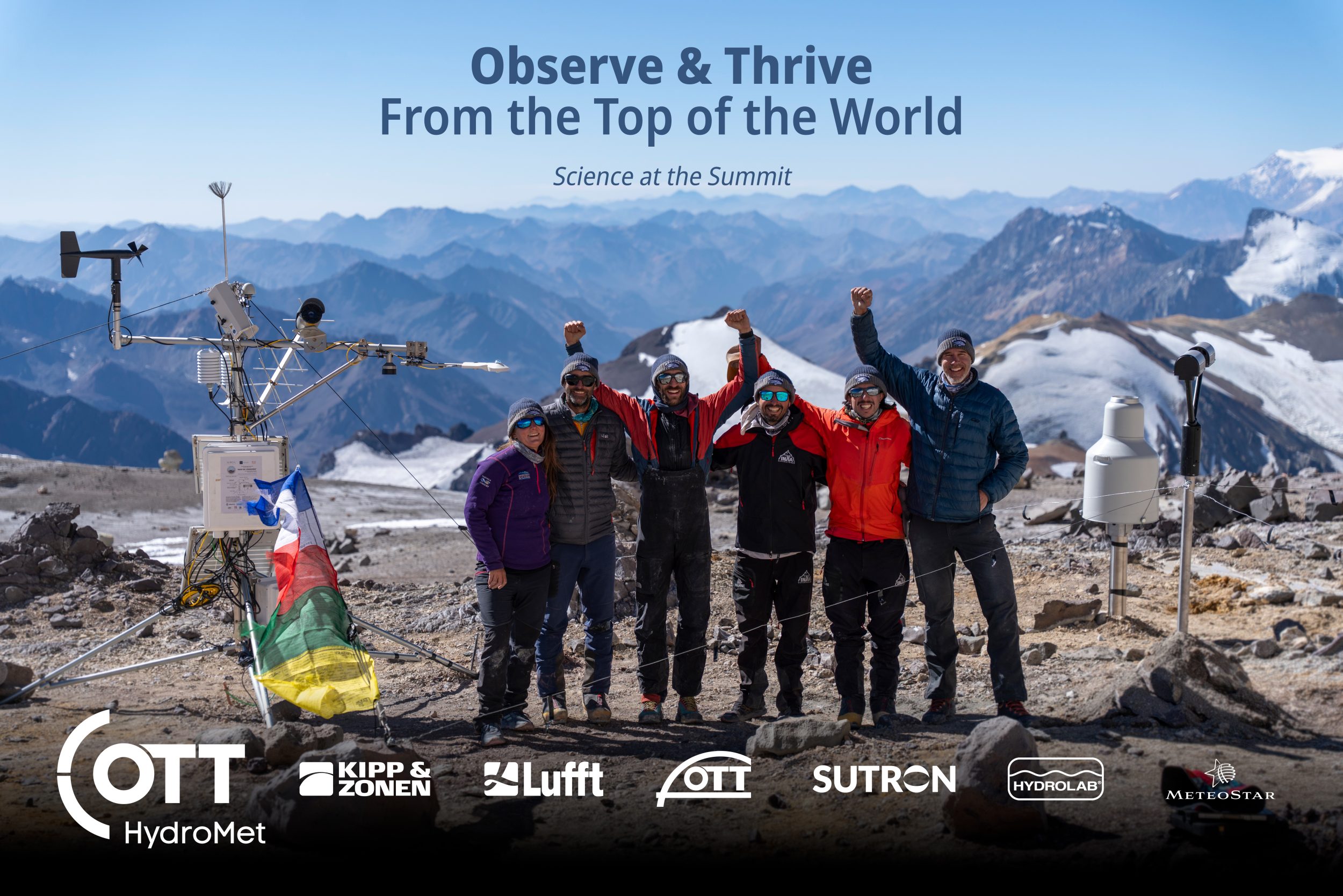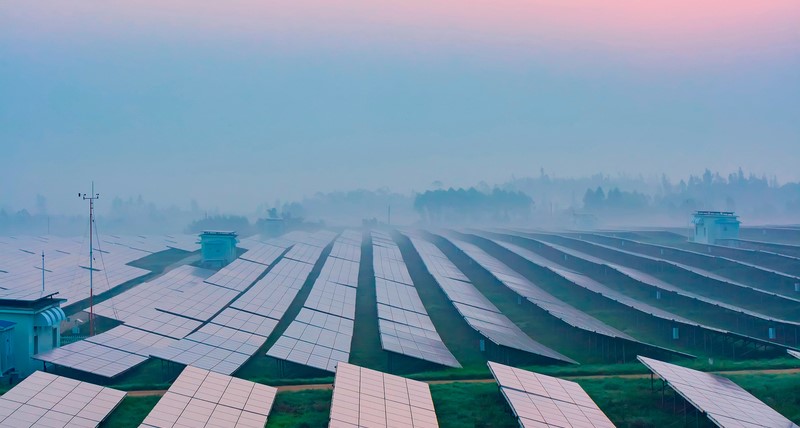One of the first to work with DustIQ was Green Energy Park to support the field tests of our research team. Since February 2018 the DustIQ is on their site and measuring the on-site soiling ratio.
Green Energy Park (GEP) is a research center, a training platform and a testing facility located in the green city of Ben Guerir, mid-south of Morocco developed by IRESEN (Research Institute of Solar Energy and New Energies). The PV capacity installed to date is 250kWp of residential installations from different technologies.
Challenges and opportunities
GEP is located in an area with a semi-arid climate, the main challenges for PV are soiling and temperature. These two parameters contribute to the degradation of the PV modules but also have a large impact on the efficiency of the electricity production.
On the bright side GEP is located in a well irradiated area with an average GHI value of 2100 kWh/m² , which offers great potential for solar power generation.
Another benefit of their location is the similarity of the weather properties to different locations in MENA region. The research of technologies and coatings can be used for similar locations in MENA.
Average soiling rates
The average soiling rate measurements are around 96.3% at GEP. However, soiling is a very specific phenomenon and it highly depends on the location. The daily soiling rate depends on the season and the specific climatic conditions like red rain event. Figure 1 presents the daily SR values during the period from May the 6th until June the 7th 2017. As it can be seen, in most cases, the daily drop of SR is less than 0.2%, but, this drop can reach 3.8% like in the 24th of May in figure 1.
NB: the SR values were measured by dividing the Isc values from two PV modules. The first one was cleaned every day and the other in different periods.
The effects of soiling on PV plants
Generally, sites with high irradiation records are located in deserts, which is linked to the presence of dust and the lack of water. This increases the OPEX and the O&M costs, thus, it’s crucial for any project developer to assess and measure the SR values in the candidate sites for PV plants hosting and for long time (at least two years).
Green Energy Park evaluates the impact of soiling on the production and the O&M costs. Based on long-term SR measurements and some specific parameters technical and economical they are developing software to run different cleaning scenarios and provide the most optimal one for a specific location.
DustIQ and pyranometers on the GEP site
When we asked Dr. Ahmed Alami Merrouni, Responsible of R&D on Meteorology & Solar Materials Degradation at GEP why he prefers to work with Kipp & Zonen he replied: “I know Kipp & Zonen from the scientific community and the high accuracy and reliability of their sensors. I’ve positive experience working with their pyranometers for many years in my work on the meteorological and solar resource assessment.
Regarding the new DustIQ system, we choose this device because it’s a very practical soiling measurement system. It is very easy to install compared to other soiling systems and it can be installed at any location in the PV park. Furthermore, it uses an optical approach for the SR measurement which make it better than the two modules measurement method that is representative for only one specific technology.
Besides, the system can provide nighttime measurements which very helpful and important for power plants operators. It can detect specific phenomenon, like red rain or dust storms that happen during the night. They can take optimal, smart and proactive cleaning decisions, which will lead to decrease the O&M costs and increase the efficiency of the PV plants. With this feature I think that DustIQ is the best soiling measurement device for running power plants and studies for PV projects in the commissioning phase.”
